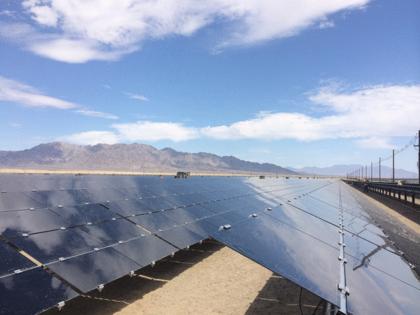Commentary: Desperate for good news about climate change? Consider the pace of clean energy growth
Published in Op Eds
Climate change has been viewed almost universally as a burden, a hot potato to be passed from country to country at annual climate change conferences. Although it’s widely known that climate-friendly solar and wind energy have become cheaper and easier to produce, most don’t realize that they are very likely to get even less expensive and grow quickly. That will have enormous political and business consequences, creating not just hazards but also tremendous opportunities.
Because technological progress depends on unforeseen innovations, it is to an extent unpredictable: We don’t know what the next innovation will be. Nonetheless, the rate at which a given kind of technology improves is remarkably predictable.
The best-known example is Moore’s Law. In 1965, Gordon Moore, who would go on to co-found Intel, predicted that microchip density would double every two years, a projection that has proved accurate to this day. As the density of these components has increased, their relative cost and energy consumption has fallen and their speed has accelerated. As a result of this exponential improvement in efficiency, today’s computers are about a billion times more powerful than they were when Moore made his prediction.
Like computer chips, many other technologies also get exponentially more affordable, though at different rates. Some of the best examples are renewable energy technologies such as solar panels, lithium batteries and wind turbines.
The cost of solar panels has dropped an average of 10% a year, making them about 10,000 times cheaper than they were in 1958, the year of their pioneering use to power the Vanguard 1 satellite. Lithium batteries have cheapened at a comparable pace, and the cost of wind turbines has dropped steadily too, albeit at a slower rate.
Not all technologies follow this course, however. Fossil fuels cost roughly what they did a century ago, adjusted for inflation, and nuclear power is no cheaper than it was in 1958. (In fact, partly due to heightened safety concerns, it’s somewhat more expensive.)
The global deployment of technologies follows another pattern, called an S curve, increasing exponentially at first and then leveling out. Careful analysis of the spread of many technologies, from canals to the internet, makes it possible to predict the pace of technological adoption. When a technology is new, predictions are difficult, but as it develops, they get easier.
Applying these ideas to the energy transition indicates that key technologies such as solar, wind, batteries and green-hydrogen-based fuels are likely to grow rapidly, dominating the energy system within the next two decades. And they will continue to get cheaper and cheaper, making energy far more affordable than it has ever been.
This will happen in electricity generation first and then in sectors that are harder to decarbonize, including aviation and long-range shipping. Green-hydrogen-based fuels are particularly important as they have the potential to provide long-range storage to power the grid when wind and sun are not available. Although the technology is still in its early stages and presents challenges, it has already dropped substantially in cost, and studies of similar technologies suggest these fuels could improve as rapidly as solar energy.
All of this is great news for the climate. We are improving and adopting technologies that can wean us from fossil fuels just when we really need them.
The transition has up-front costs, but the long-range benefits are huge. The future savings more than offset present investments to the extent that the transition would make sense from a purely economic standpoint even if we weren’t worried about climate change.
The sooner we make investments and adopt policies that enable the transition, the sooner we will realize the long-term savings. And the transitions will bring many other bonuses, including better energy security, less pollution, improved health, reduced environmental harm and more stable energy prices.
Although energy accounts for only about 4% of global output, the rest of the economy depends on it. A rapid transition will create winners and losers, shaking up global commerce and geopolitics. Fossil fuel producers that don’t pivot quickly will go out of business, and petrostates will suffer.
This is a great example of what the Austrian economist Joseph Schumpeter called “creative destruction.” It’s bad for incumbents but an enormous opportunity for challengers vying to take their place. Those who rise to the occasion will prosper, and those who ignore it will perish.
Just as Moore’s Law helped chip designers predict and plan for the future, its generalizations provide guideposts that can help us ensure that the energy transition proceeds not just quickly but also smoothly and profitably.
____
J. Doyne Farmer is the director of the complexity economics program at the Institute for New Economic Thinking at Oxford University’s Oxford Martin School. He is the author of “Making Sense of Chaos: A Better Economics for a Better World.”
©2024 Los Angeles Times. Visit at latimes.com. Distributed by Tribune Content Agency, LLC.




























































Comments